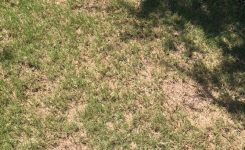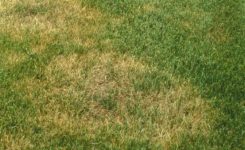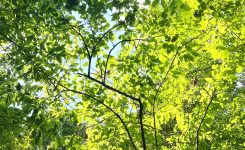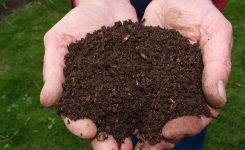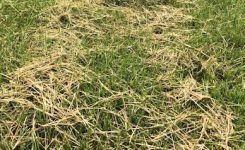Lawn Care Services, Lawn Treatment Solutions Blog
Why Aerate and Seed a Tall Fescue Lawn?
Why Aerate and Seed a Tall Fescue Lawn?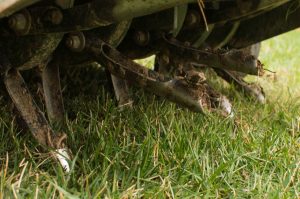
First, what is aeration?
In lawn care, aeration (also known as core aeration) refers to the loosening of soil particles to enable air, water, and nutrients to penetrate through the root zone of the turfgrass, which contributes to healthier and thicker grass. Core aeration involves pulling small plugs of thatch and soil from the lawn with a machine. This mechanical method of extracting cores aerates the soil instantaneously, and for Tall Fescue lawns, serves the additional benefit of loosening and preparing the soil to improve seed-to-soil contact during fall seeding of Tall Fescue grass.
Why aerate and seed a Tall Fescue lawn?
The clay soil that is common in Wake Forest, Rolesville, and surrounding areas is naturally compacted. The ordinary use of your lawn can make the compaction worse, which progressively stifles the healthy development of your turf. Well-aerated soil promotes heartier root growth, which enables your lawn to better resist drought and heat stress, fungal diseases, and weed and pest pressure.
This image shows how aeration works to benefit your lawn: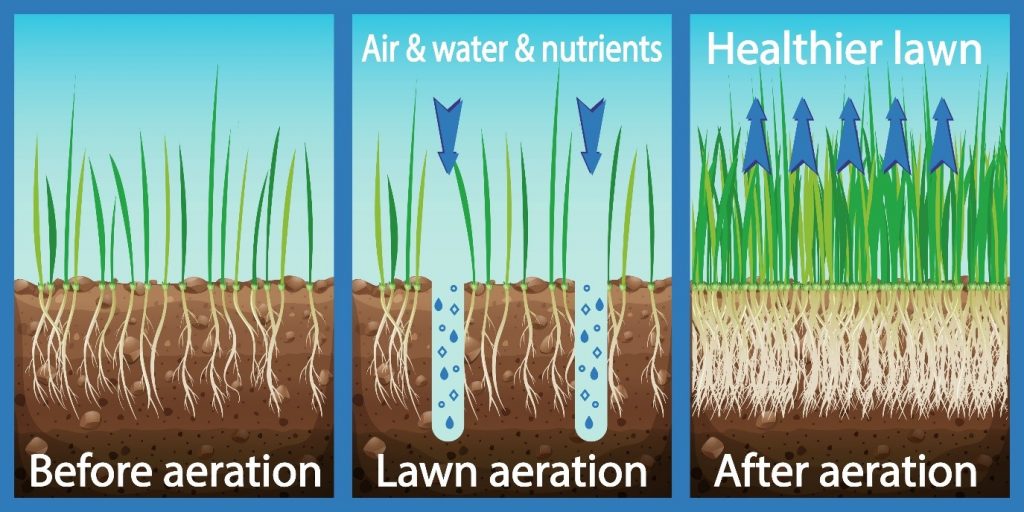
How often do Tall Fescue lawns need aeration and seeding?
Mechanical aeration may not necessarily need to be done every year except that it serves the important purpose of loosening and breaking up the soil to prepare it for seeding. Seeding is typically needed to some extent each fall in our climate zone where Tall Fescue, as a cool-season grass, sustains some damage from numerous stressors (e.g., drought, disease, heat, pests, improper mowing or irrigation). Therefore, some seeding is required to repair whatever damage occurred during summer, and the process of core aeration helps improve the success of seeding.
When is the best time to aerate and seed Tall Fescue?
Fall is the only viable season in our transitional climate zone to repair damage to a Tall Fescue lawn with aeration and seeding. The period between about mid-September and mid-October usually provides the best soil temperatures to sow Tall Fescue seeds that have time to both germinate and become well-established before the soil cools in late fall. (Earlier in September should be fine too – soil temperatures may be a bit higher than optimum but are usually decreasing as nighttime air temperatures are going down).
Avoid sowing seeds in late-October if possible. While the soil temperature may be good for germination at this time, late-October seeding shortens the period that the new grass seedlings have to become mature. Your new grass may fill in very well, but it may not have time to establish a hearty root system, which is what gives it the best chance to survive the various stresses it will face during summer in our climate zone.
When is it best to avoid aerating and seeding Tall Fescue lawns?
We strongly advise against aerating or seeding Tall Fescue during spring in our transitional climate zone. There is a period of optimum soil temperature for seed germination every spring, but seeding Tall Fescue in the spring will almost certainly result in a terrible looking lawn by mid-summer.
Here’s why…
In order to seed grass during spring you would need to forgo weed pre-emergent which is important for managing summer weeds. Without a pre-emergent weed management strategy, you would be promoting the growth of both weeds and grass by irrigating frequently enough for grass seed germination.
After the grass fills in, you would need to water the immature grass seedlings frequently to try to keep them alive as the temperatures rise. This, in turn, promotes the development of fungal disease by May. By Memorial Day the spring-seeded Tall Fescue is declining and by Independence Day all or most of the new grass is dead, which leaves you with a lawn for the rest of the summer that looks worse than if you had skipped the seeding and followed best practices for Tall Fescue management.
If you find yourself with a thin, weedy Tall Fescue lawn after the fall renovation period has passed, then the best management strategy is to fertilize the existing grass and begin managing the life cycles of the various types of weeds that will grow in it throughout the growing season. Then, aerate and seed in the fall.
If you are not already a Crownover Green customer and are interested in a no-cost quote for aeration and seeding for your Tall Fescue lawn, visit: www.crownovergreen.com/get a quote

